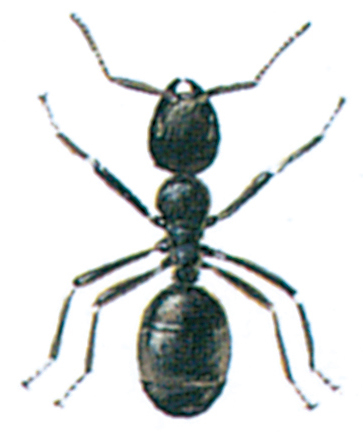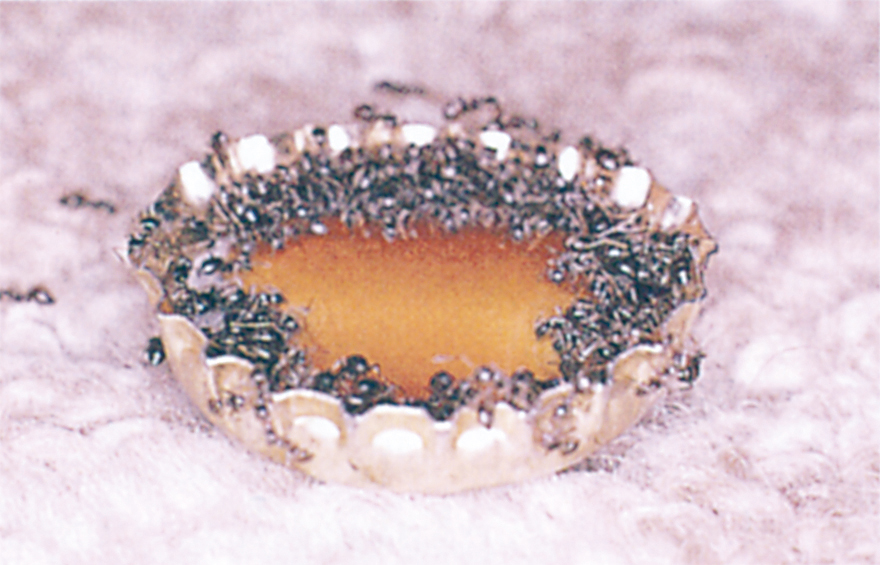Latin: Lasius niger

These are the ants most commonly seen on verandas and in the house. They live in the ground, frequently under rocks or flagstones, and they will often penetrate under the house itself, particularly if it has been built directly on the ground.
Ants frequently build nests in the insulation layer and from there they penetrate up into the house itself through the cracks which inevitably appear in the cement.
Garden ants can also build in mouldering timber (see p. 145). In nature, these ants search for flower nectar and for what is poetically known as honeydew but which is actually a sweet, sticky secretion produced by aphids or greenfly.

When garden ants get into the house it will soon be seen that they are particularly attracted to sweet substances, such as drops of jam or scraps of pastry and cake. As soon as one ant has found such a delicacy there will soon, as though by magic, be a whole trail of them.
Naturally, of course, there is nothing magical in this. Ants cover a wide area in search of food. When one has found something sweet it can communicate the fact to others by tapping them with its antennae and also by feeding them with some of the contents of its crop.




